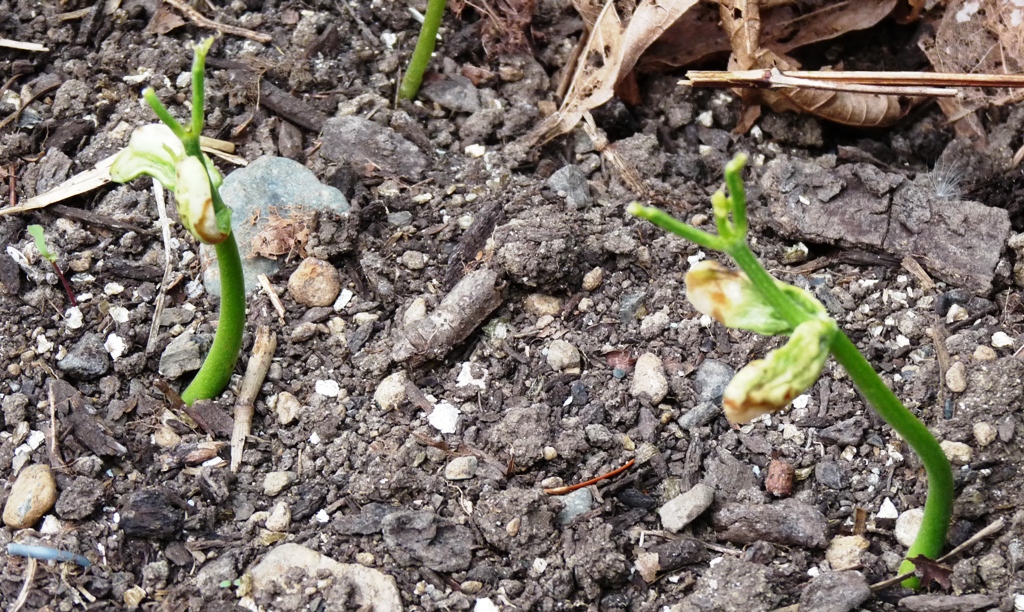By Linda Gilkeson
People should carry right on planting cabbage/mustard family plants, onions and leeks, lettuces and leafy greens, peas, broadbeans, carrots, beets and parsnips.
A note about parsnips: Make sure you sow fresh seed (packaged for this year). Parsnips seeds are only viable for a year or so. Parsnips germinate best in cool weather, but by the time you wait long enough to discover that old seed is never coming up, the soil could be too warm for good germination.
It is still a little cool at night for peppers, squash, cucumbers, melons, corn and beans. Really vigorous squash, such as zucchini, should be fine outdoors now, as well as tomatoes. Tomatoes are more robust than other warmth-loving plants, but the general rule is to plant tomatoes when nights are mostly staying above 10 degrees C. Just be prepared to protect them with cloches or floating row covers if it turns cool after you plant. If the leaves on your outdoor tomatoes turn purplish, it is a sign that it has been too cold for them. This is a temporary nutrient deficiency induced by the cold and they should recover when it warms up.
Beans and corn: While it is still too cold to sow corn or bean seeds outdoors, you can start both indoors anytime. Around May 1, I start beans in a tray of vermiculite. I also sow the first of my three successive batches of corn in small individual pots, one plant per pot or one in each cell of an egg carton. I sow sweet corn at least three times, two to three weeks apart, to spread out the harvest so that all the ears are not ripe at once. By the time seedlings are ready to go outside in three weeks it should be warm enough.
Even later in the season I still start beans in vermiculite to avoid pillbug damage. If your bean seedlings end up looking like leafless green sticks (see photo) that’s a sign that pillbugs have been nibbling. The jaws of pillbugs are quite weak, however, and once bean plants have grown for a couple of weeks, they are no longer tender enough to be damaged by pillbugs.
Spring pests
Currant sawfly/Imported currantworm: If you have currants or gooseberry bushes, tight now is the time to find the eggs of those caterpillar-like green larvae that chew up their leaves. The insects lay eggs along veins on the underside of leaves from mid-April (warm years) to the end of May (cool years). All you need to do is check the new leaves in the central and lower part of the bush for what looks like tiny stitches of dental floss along leaf veins (see photo). If they have already hatched, you will see a dense group of tiny green worms feeding together. Simply remove and destroy the leaves with the eggs or larvae. There is only one generation per year so catching them now avoids a whole lot of damage in June and they may not even be back next year.
Wireworms: These bore into potatoes, carrots and other roots as well as large seeds, such as corn. They are very fond of boring into lettuce roots. Clearing them out of a bed before you plant can be done with potato baits. First, remove all crop debris and weeds so the bed has nothing growing in it. You can prepare the bed for planting, picking out any wireworms you see in the process and then put in the baits for a week. Skewer chunks of potato on short sticks (they act as markers so you can find them again), then bury the potato piece an inch or so in the soil. Check the traps every day or two and destroy wireworms. Some bore right into the potato (just pull them out); others are in the soil beside the bait. I use a trowel to scoop up each bait chunk so at not miss those nearby wireworms. Wireworms can move several feet through the soil so placing the baits at one- to two-foot intervals in the bed is close enough. You can keep re-using the potatoes chunks for bait. Wireworms are common in sod and readily migrate into garden beds adjacent to lawns or weedy pathways; along the border of such beds is a good place to put the bait potatoes.
Speaking of slugs: I ran into someone recently that had not heard of iron phosphate slug baits. In case you haven’t either, these work very well and unlike the old toxic metaldehyde baits are safe for birds and other animals that might eat a pellet. But you need to use them correctly: scatter very small amounts over a wide area, frequently. Putting a ring of the granules around plants you want to protect can backfire because the granules (pasta pellets) are meant to attract slugs. When they eat the iron in the pasta, it interferes with their ability to make slime, but the slugs have plenty of time to eat your seedlings before they eventually feel the effects of the iron.

